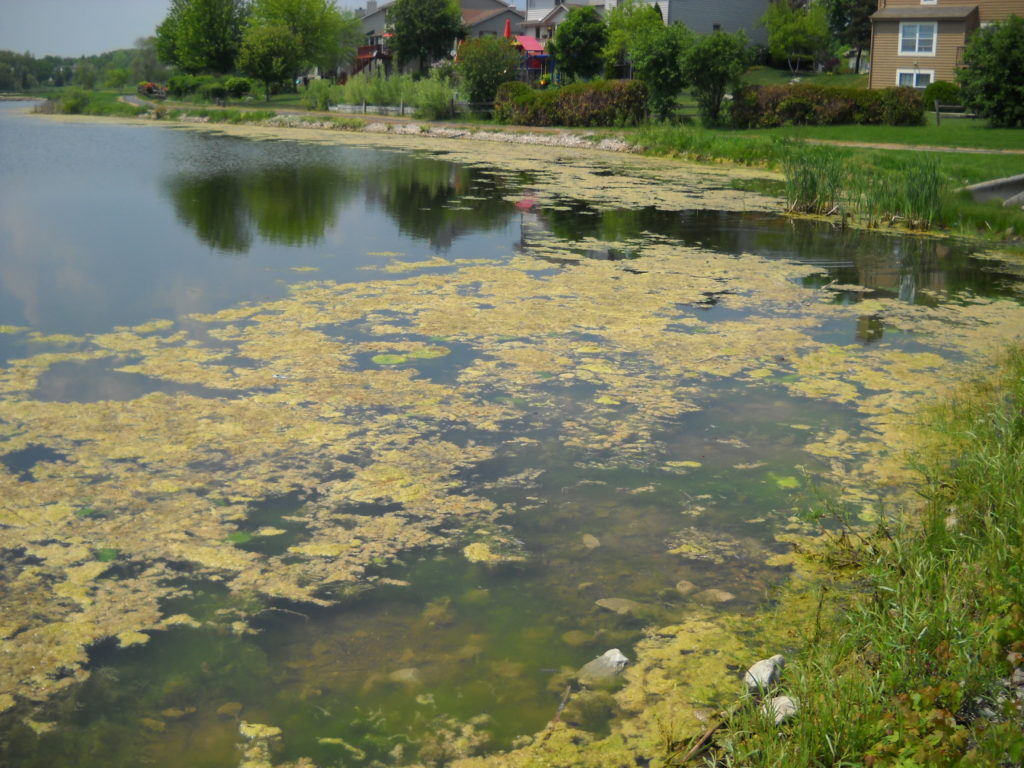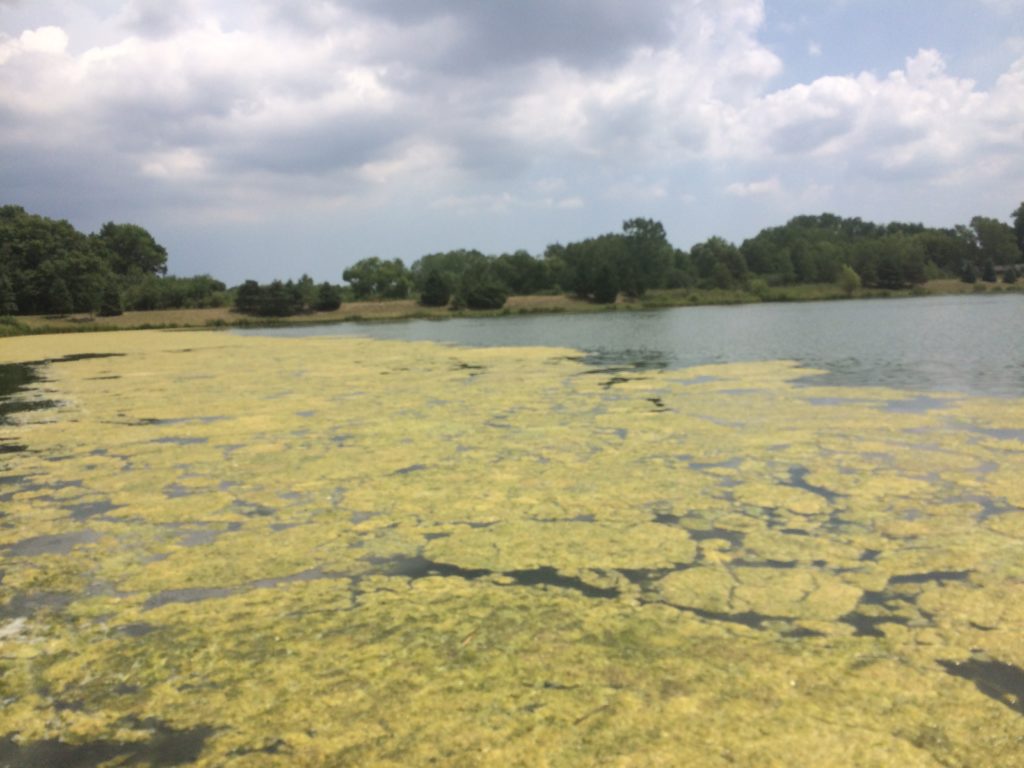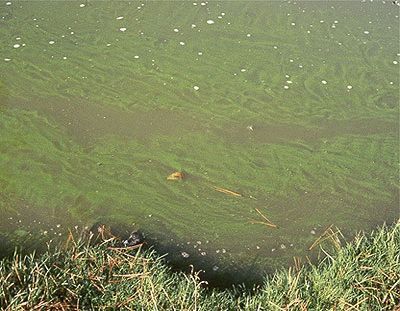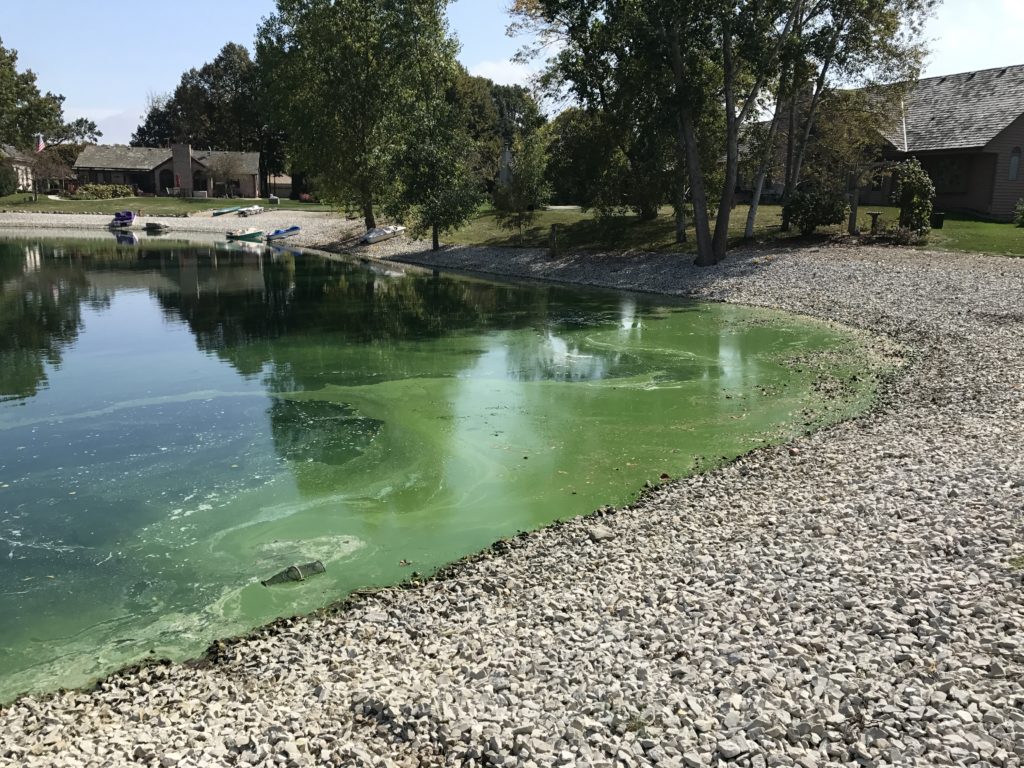By: Zach Haas,
Senior Aquatic Biologist
Slime, Goo, and Scum… Yuck!
Every summer water lovers and pond owners come in contact with many different types of algae, but typically don’t know which ones are healthy for an ecosystem, and which ones are potentially harmful. There are ways to have a basic understanding of algae types, and below we have identified broad groups of algae you may encounter this summer.
Filamentous Algae (Green Algae)
Filamentous algae is most likely the “slime” you are encountering during the spring and summer. Filamentous algae comes in many varieties and textures. Some filamentous algae tend to be more slimy to the touch (Spirogyra, Mougeotia, and many more) whereas others are more coarse and hair-like (Cladophora, Pithophora, and many more). Some filamentous algae can even create net-like structures (Hydrodictyon) which enables for rapid growth.
These algae types are typically healthy in an ecosystem and occur in most eutrophic systems in the world. Filamentous algae can grow in shallow ponds, streams, and large lakes as long as key nutrients (Phosphorus and Nitrogen) are available. Many aquatic species require green algae to survive as it can be a large portion of their diet. Most filamentous algae can be controlled through similar management protocols.
Filamentous Algae Management Strategies
- Control nutrients in your watershed to limit the growth of green algae
- Treat algae blooms early to reduce oxygen loss potential, and reduce biomass going to the bottom
- Follow up treatments with beneficial bacteria to tie up future nutrients and help break down dying algae
- In some cases, physical removal can be beneficial in eliminating biomass and nutrients in your waterbody
- If algae is covering the majority of the waterbody, break up treatment into multiple treatments to protect your ecosystem from a dissolved oxygen crash
Macro Algae (Chara or Nitella)
Macrophytic algae species appear more plant-like than algae-like. These algal species are made up of leaf-like and stem-like structures. Macroalgae species grow submerged and attached to the pond or lake bottom. Typically these species are found in hard water, and also in areas where groundwater influence is prevalent. At the beginning of the year, these algal species will appear green as they are actively growing, but as the season progresses a calcified layer of calcium carbonate forms which ultimately protects the cells from potential harm or treatments.
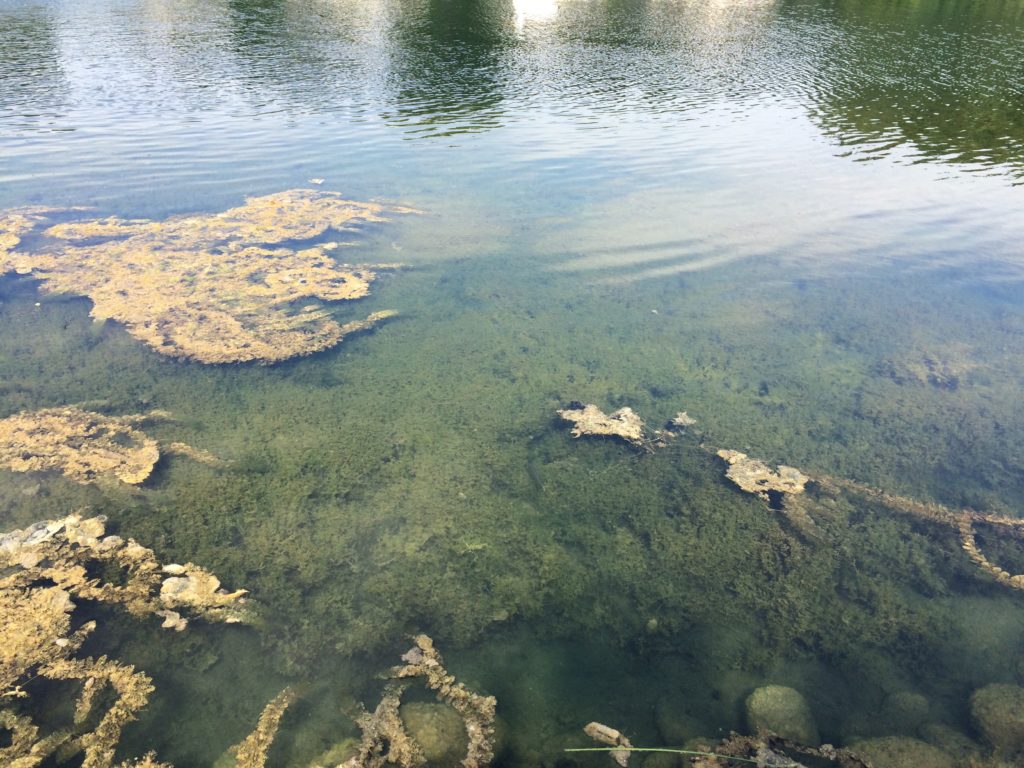
Chara is very common in private ponds and typically goes right in line with water clarity as it is a great filter for water, ultimately taking many suspended solids out of the water column. Chara can be broadly identified due to its strong odor it has when taking out of the water and the stem-like structures are broken, hence its common name Muskgrass. Chara can grow to nuisance levels where it may reach the water surface, die, and has the potential to cause dissolved oxygen crashes when left unmanaged. When these dissolved oxygen crashes occur, your fishery could be vulnerable to a fish kill.
Macrophytic Algae Management Strategies
- Treat early in the season prior to calcium carbonate protecting cell walls
- Continually maintain throughout the season to prevent from reaching the surface
- Do not eliminate as it can be a great filter to your pond or lake
- If macroalgae has reached the surface, treat segments of the pond to help prevent severe dissolved oxygen crashes
Planktonic Algae (Cyanobacteria)
Planktonic algae are one of the key types of algae that is of concern to our waterbodies. Planktonic algae are much harder to identify species due to their microscopic nature. Most planktonic algae species are free-floating, unlike filamentous algae that typically attaches itself to the bottom or other media in your waterbody. Planktonic algae thrives in nutrient-rich ecosystems (hyper-eutrophic) or in ecosystems that lack an aquatic plant community.
WLPR performed a study on Lake Winnebago which is a primary example of this issue. The summary of the findings on Lake Winnebago can be found here. Most species create a film on waterbodies, and don’t have a structure you can physically see or grab. Many planktonic algae species of the potential to cause toxins which can be anywhere from a dermal irritant up to a potentially lethal event to a fishery or even a pet. These species require quick action and long-term planning.
Planktonic Algae Management Strategies
- Nutrient management is key in reducing planktonic bloom potential
- Apply proactive products (i.e. bacteria, enzymes, polymers, phosphorus reducers) to reduce nutrients availability
- Treat early to prevent large bank of cyanotoxins from being released
- Use aeration to promote a healthy ecosystem throughout the entire waterbody
- Encourage a sustainable plant community to help create a balanced ecosystem and nutrient uptake
Benthic Algae
Another type of algae that we occasionally observe are benthic algae species. These species can be a normal occurrence or be a toxin producer (Lyngbya). Typically, these species grow in the depths of your ecosystem where light may not penetrate, or they grow in areas lacking a healthy plant community. Some benthic species will grow on the bottom and then float to the top causing a very unsightly appearance to your water body (Oscillatoria). Other species grow among the bottom on rocks, twigs, and other structures and don’t cause issues for either aesthetics or pond health (Diatoms).
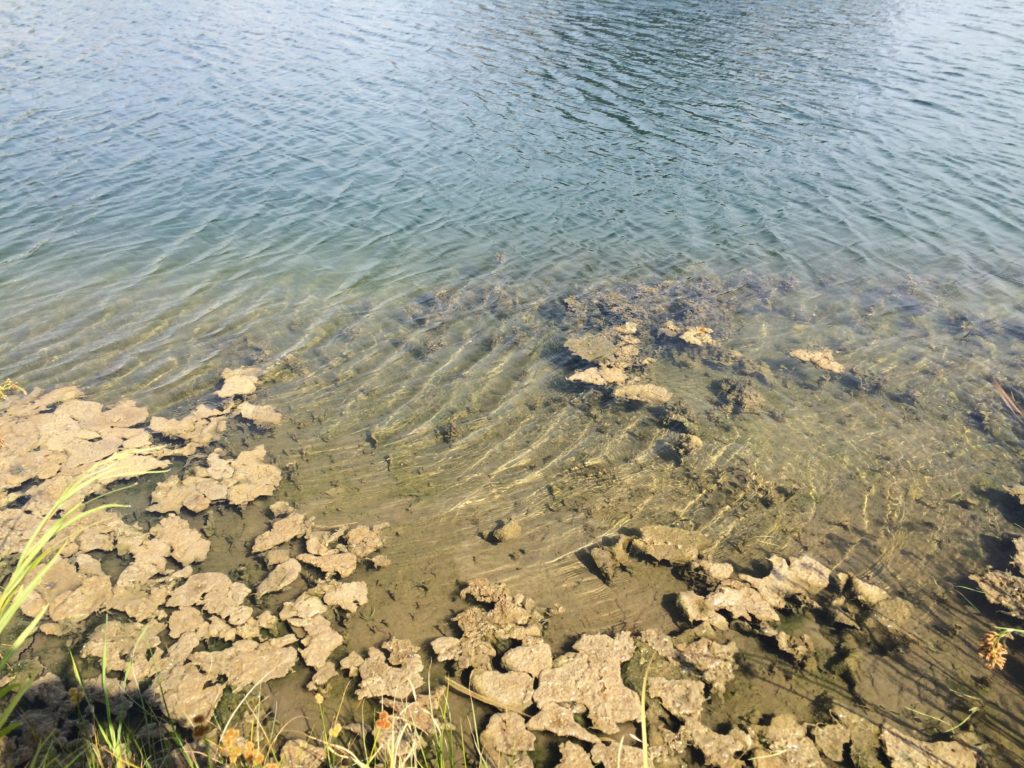
Many benthic species are a form of planktonic algae or cyanobacteria, but don’t have the drastic issues that many free-floating planktonic algae species have. These benthic species can be great at filtering the water and tend to feed on the nutrient-rich water basin. However, these species can make for a “gross” appearance to your pond, especially in those systems lacking any competition from other health algae like filamentous algae or Chara.
Benthic Algae Management Strategies
- Promote a healthy ecosystem by establishing a submergent plant population
- Reduce organic sediment layer by applying sediment reducing bacteria strains to help “starve” these species
- Promote aeration to help circulate water to encourage healthy algae growth
- Apply enzymes to help breakdown organic matter
- Limit iron (especially for Oscillatoria) and nutrients in waterbody to help reduce potential algae bloom potential
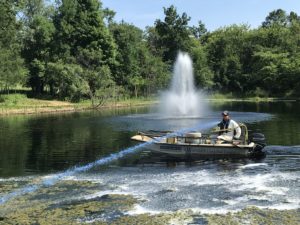
You may now think that you know a bit more on algae species, but know that there are well over 30,000 species of algae in the world. Each species reacts differently to changes in an aquatic ecosystem and having a knowledgeable biologist on-site can help detect potential harmful blooms. Reacting quickly to nutrient, temperature and seasonal changes can be the game-changer in whether your ecosystem remains in balance, or becomes the target for a potentially toxic planktonic algae bloom.
